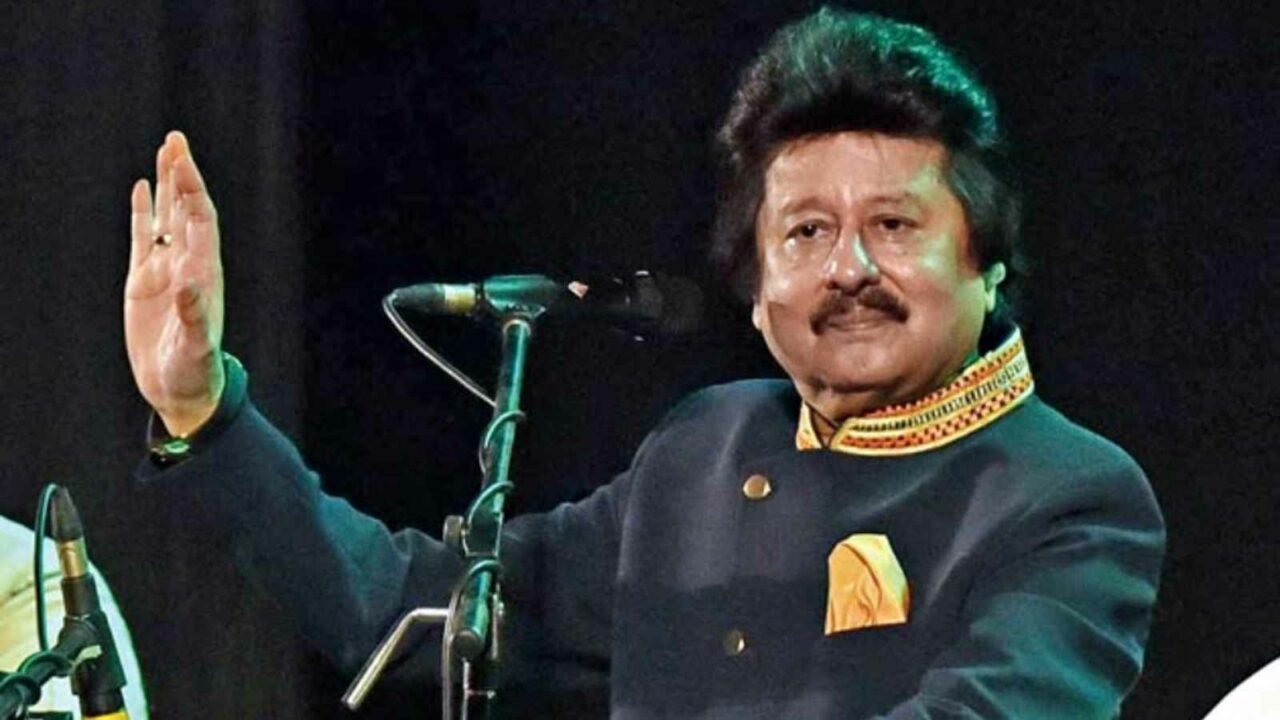Pankaj Udhas 72nd Birthday: The singing career of Pankaj Udhas can be compared to two roads diverging in the forests. On the right was his eldest sibling, the renowned ghazal singer Manhar Udhas. On the left was his second sibling, the ghazal singer Nirmal Udhas.
Pankaj Udhas had little choice but to choose the path of least resistance. Who among them would be the family torchbearer for the ghazal form was the challenge.
Pankaj Udhas not only surpassed his siblings in fame, but he also became inextricably linked to a type of ghazal that was unique to him: the song that invokes the divine through wine-inspired imagery. In a 2001 interview, the amiable Udhas attempted to elucidate this. “Only about 25 of the tens of thousands of ghazals I’ve sung are about sharab (wine). However, these were the tracks chosen by music companies for compilations. It was a poor marketing strategy. When I recorded them, I never expected this to occur.”
Pankaj Udhas Early Life:
Born in Jetpur, Gujarat, to a family of landlords in 1951, Udhas was introduced to music by his siblings, who performed at events. During the Indo-Chinese conflict, a member of the audience once gave Pankaj Udhas Rs 51 for his rendition of “Ae Mere Pyaare Watan” (Kabuliwala, 1961), which inspired him to pursue a career in singing. Thus, the youngest Udhas was introduced to the ghazal and poets such as Mir Taqi Mir, Omar Khayyam, and Mirza Ghalib through the Urdu instructor of his older sibling, Manhar Udhas.
In the 1972 film Kaamna, he sang a melody composed by Usha Khanna and penned by Naqsh Lyallpuri. This was his first break as a singer. In the aforementioned music sample, Udhas sings with a voice that has not yet “broken”; it is still young and immature. Udhas moved to Canada after the film went unacknowledged. He began to perform at local gatherings after realising the popularity of the ghazal form, which led him to return to India.
His Debut:
In 1980, he released his debut album, Aahat. His voice in this number, Yeh Alag Baat Hai Saqi, is noticeably different from his first film solo. It is a sign of his advent that the bass is deeper and more nuanced.
With his cameo performance in the 1986 Mahesh Bhatt film Naam, in which he sang “Chitthi Aayi Hai”, Udhas became a ubiquitous name. The music was composed by Laxmikant-Pyarelal and written by Anand Bakshi. It resulted in numerous offers, but Udhas chose to adhere to his genre and limit his film appearances to a handful: Ghayal (1990), Saajan (1991), Yeh Dillagi (1994), Phir Teri Kahani Yaad Aayee, and Mohra (1994).
In the 1990s, when the music channel MTV promoted non-film music, Pankaj Udhas felt right at home. Several music videos promoting his compositions and ghazals featured him. John Abraham attributes his success to Pankaj Udhas, who cast him in his music videos when he was a struggling actor. Abraham stated in 2012 at a concert, “I view Sir (Pankaj Udhas) as a mentor because he was the first person to graciously accept me in his music video when I entered the industry as a model.”
Through his recordings, Udhas expanded the ghazal’s reach from private gatherings to every television-owning home. His prominence gave him an advantage in popularity over his less media-savvy siblings. Appropriately, it tripled whenever he sang about intoxication.
Cindy Smock Biography, Birthday, Career, Age, Height and Net Worth


















